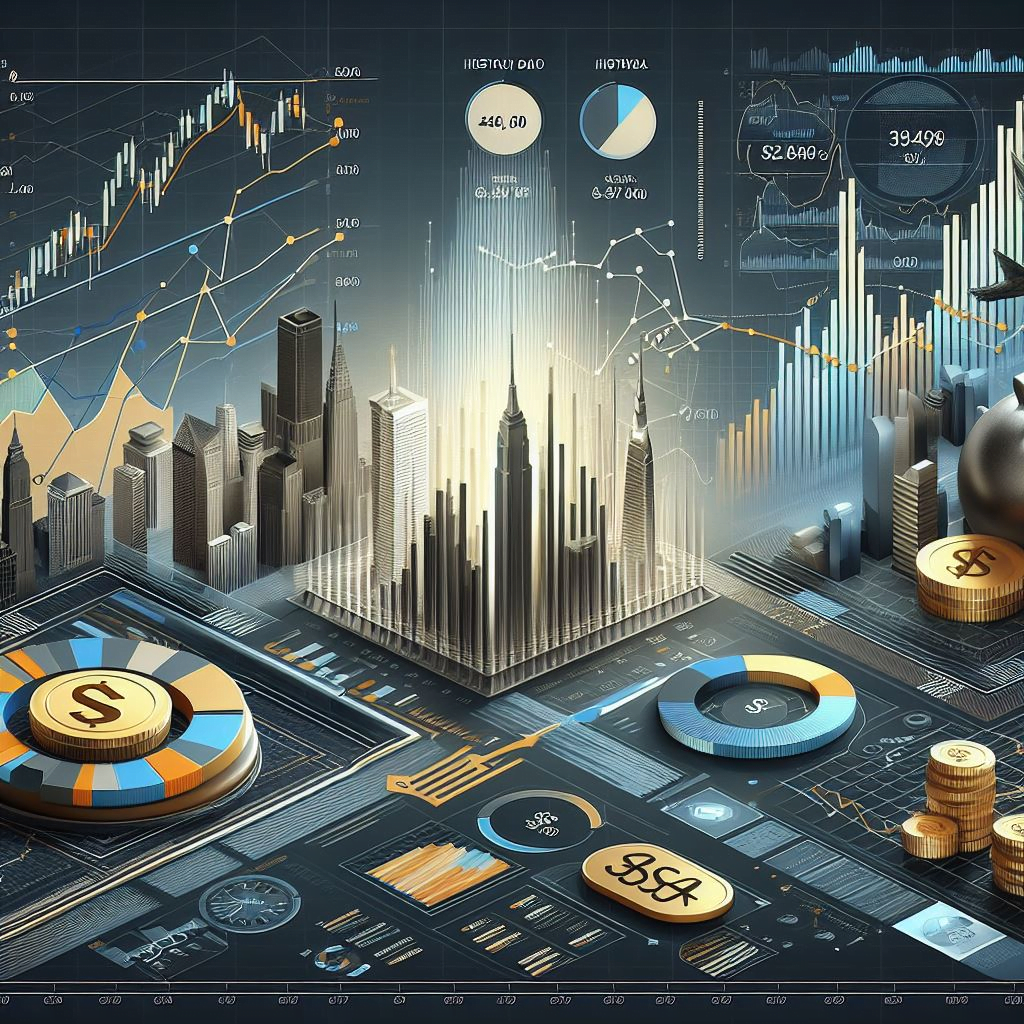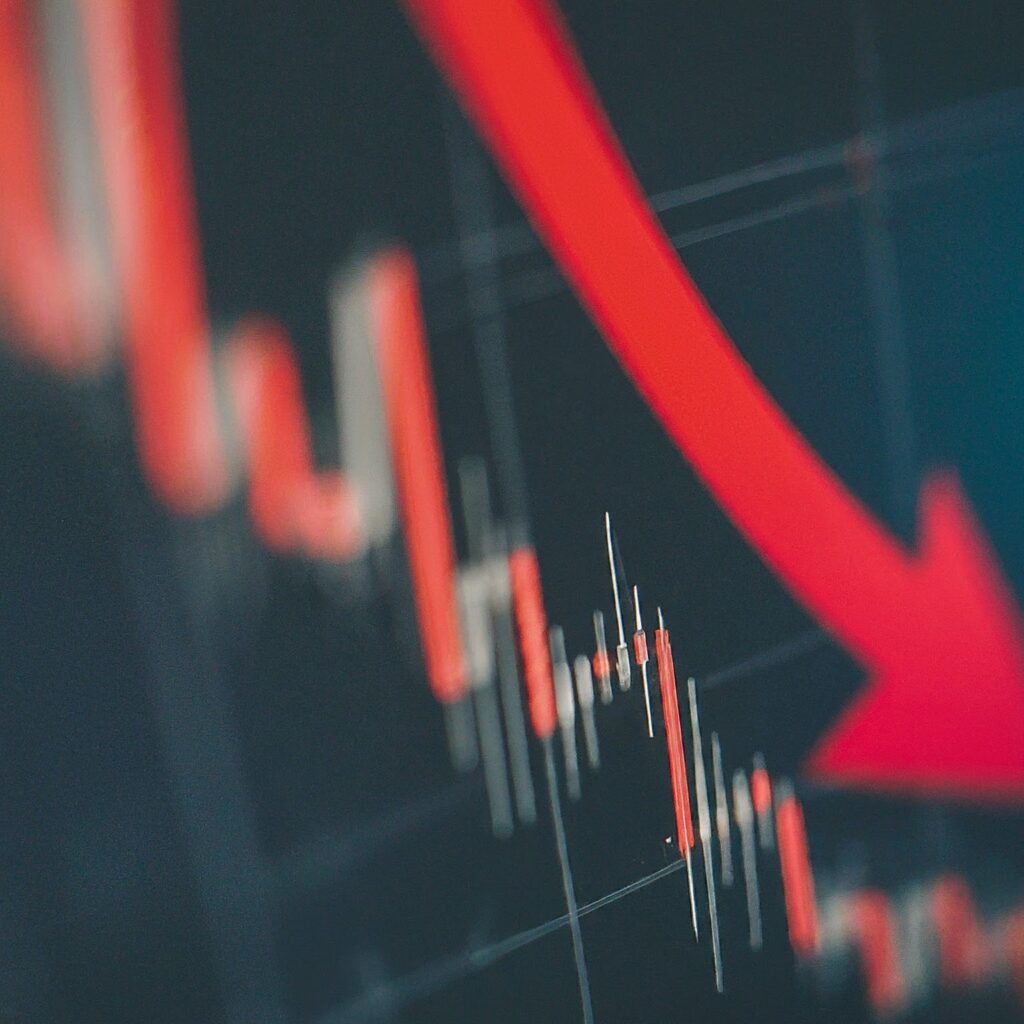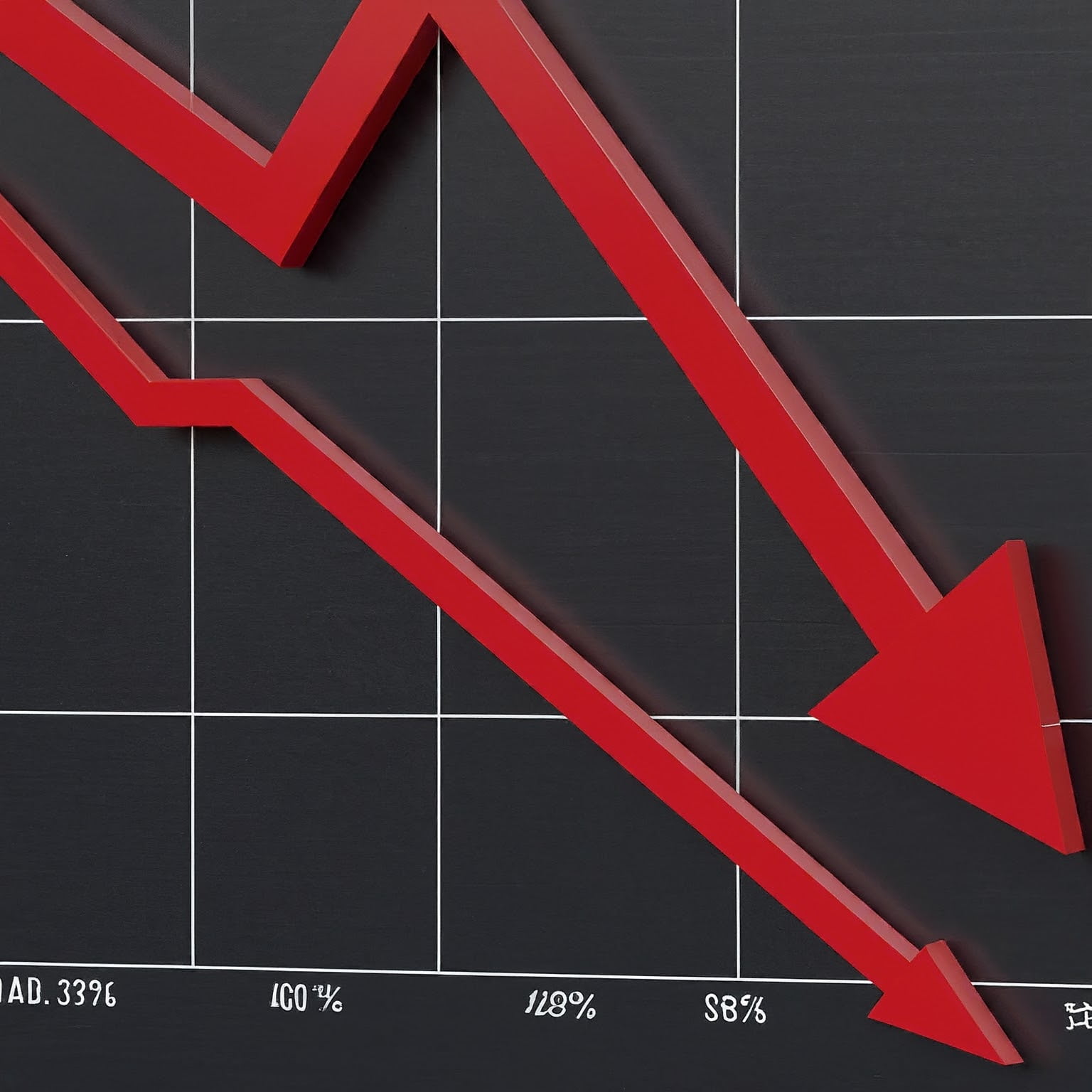The S&P 500 and the Looming Crash
The stock market is a fascinating and volatile arena, where fortunes are made and lost in the blink of an eye. One index that captures the attention of investors worldwide is the S&P 500. But lately, ominous signs have been flashing, hinting at a potential crash. In this blog post, we’ll delve into the details, explore the indicators, and discuss what investors should be aware of.
1. The S&P 500: A Brief Overview
The S&P 500 is a market-capitalization-weighted index that tracks the performance of 500 large publicly traded companies listed on U.S. stock exchanges. It’s often considered a barometer of the overall health of the U.S. economy. Historically, it has been a reliable indicator of market trends.
2. The Bubble and the Burst
2.1 The Warning Signs
- Overvaluation: Paul Dietrich, chief strategist at B. Riley Wealth Management, has raised the alarm. He believes the S&P 500 is “bizarrely overvalued.” Key indicators include:
- High Price-to-Earnings Ratio: The index’s P/E ratio is historically elevated.
- Low Dividend Yield: Unusually low dividends signal overvaluation.
- Elevated Trading Range: Stocks are reaching unsustainable levels.
- Infeasible Priced-In Earnings Growth: The market assumes growth that rarely materializes.
- Buffett Indicator: A reading above 180% suggests overvaluation relative to the economy’s size.
2.2 The Recession Factor
- Recession: When the economy contracts, stocks often plummet. Dietrich warns that the S&P 500 could crash by 49% when valuations normalize and a recession hits.
- Bubbles and Emotion: Bubbles burst suddenly because they’re fueled by emotion and momentum, not fundamentals. Investors should be wary.
3. Lessons from History
- The Covid Crash: Just a year ago, stocks experienced a sharp decline. The S&P 500 dropped by 12% in a single day during the pandemic-induced turmoil.
- The 2008 Crisis: The worst crash since 2008 could be looming. BCA Research predicts a potential 27% plunge as the U.S. economy faces headwinds.
- Milton Berg’s Warning: Technical analyst Milton Berg suggests a 60% crash is possible. Economic indicators are flashing red.
When Wall Street Goes Haywire: A Guide to Navigating Stock Market Crashes
Imagine driving down a scenic mountain road, windows down, hair blowing in the wind, when suddenly, you hit a patch of black ice. The car swerves, your heart leaps into your throat, and for a moment, all you see is swirling chaos. That’s what a stock market crash can feel like – a sudden, gut-wrenching plunge that leaves you wondering if you’ll ever regain control.
But fear not, intrepid investor! This guide will be your trusty GPS through the wreckage, helping you understand what crashes are, why they happen, and how to navigate them like a seasoned pro (or at least avoid getting too car-sick).

The Culprits Behind the Carnage: What Triggers Crashes?
Stock market crashes are like villains in a superhero movie – they have dramatic entrances and wreak havoc, but they all have different motives. Here are some of the most common crash culprits:
- The Evil Ex: The Relentless Recession: When the economy takes a nosedive, corporate profits tend to follow. Investors, fearing a future filled with empty wallets, jump ship, sending stock prices plummeting.
- The Geopolitical Gremlin: Global Turmoil: Wars, political instability, and international crises can create a climate of uncertainty, spooking investors and triggering sell-offs.
- The Panic-Pedaling Professor: Investor Fear: Sometimes, all it takes is a rumor or a negative news story to send a wave of panic through the market. Investors, fearing the worst, start selling their stocks in a frenzy, accelerating the decline.
- The Inflated Ego: The Market Bubble: When stock prices become ridiculously inflated due to excessive speculation, a bubble eventually bursts. This can be seen in the dot-com bubble, where unrealistic valuations led to a sharp correction.
The S&P 500: Your Crash Compass
The S&P 500, a stock market index tracking 500 big-name companies, is like your compass during a crash. By analyzing its decline, you can gauge the severity of the storm and adjust your course accordingly. A significant drop (over 20% in a short period) is a red flag, indicating a potential crash.
Battening Down the Hatches: How to Survive a Crash
So, you’re stuck in the middle of a market meltdown. What do you do? Here’s your survival toolkit:
- Channel Your Inner Stoic: Don’t let fear cloud your judgment. Focus on your long-term goals and avoid making rash decisions based on short-term fluctuations.
- Diversification is Your Friend: Don’t put all your eggs in one basket. Spread your investments across different asset classes, like stocks, bonds, and real estate, to minimize risk.
- Rebalance Regularly: Think of your portfolio as a well-diversified buffet. Periodically rebalance it to maintain your target asset allocation.
- Stay Informed, But Don’t Obsess: Keep an eye on the news, but avoid getting bombarded by daily market noise. Focus on long-term trends and company fundamentals.
Understanding Stock Market Crashes and the S&P 500
The stock market, while a significant driver of economic growth, can be susceptible to periods of dramatic decline known as crashes. These crashes can stem from various factors, including economic recessions, geopolitical instability, and investor panic. The S&P 500, a stock market index that tracks the performance of 500 large companies listed on stock exchanges in the United States, can be a useful gauge for understanding the severity of a stock market crash.
What is a Stock Market Crash?
A stock market crash is a rapid and severe drop in stock prices. Crashes are typically defined by a decline of at least 20% in a major stock market index over a short period, often just a few days or weeks. Crashes can be triggered by a variety of factors, including:
- Economic recessions: When the economy weakens, corporate profits tend to decline, leading investors to sell their stocks. This selling pressure can drive down stock prices.
- Geopolitical instability: Wars, terrorist attacks, and other global crises can create uncertainty in the markets, causing investors to sell stocks.
- Investor panic: If investors become fearful about the future of the stock market, they may all try to sell their stocks at the same time, driving down prices.
Historical Examples of Stock Market Crashes

Several notable stock market crashes have occurred throughout history, including:
- The Great Depression (1929): The most famous stock market crash in history, the crash of 1929 marked the beginning of the Great Depression. The S&P 500 (which did not exist at the time) would have lost over 80% of its value during this crash.
- Black Monday (1987): On October 19, 1987, the Dow Jones Industrial Average fell by over 22% in a single day, the largest one-day percentage decline in history. The S&P 500 also fell by over 20% on that day.
- Dot-com bubble burst (2000): The bursting of the dot-com bubble in the early 2000s led to a sharp decline in technology stocks. The S&P 500 fell by over 50% from its peak in 2000 to its bottom in 2002.
- Financial crisis of 2008: The financial crisis of 2008, triggered by the collapse of the housing market, led to a severe global recession. The S&P 500 fell by over 50% from its peak in 2007 to its bottom in 2009.
The S&P 500 and Stock Market Crashes
The S&P 500 is a widely used benchmark for the U.S. stock market. Because it tracks the performance of 500 large companies, the S&P 500 is a good indicator of the overall health of the stock market. During a stock market crash, the S&P 500 is likely to experience a significant decline. The severity of the decline can provide insight into the severity of the crash.
Coping with Stock Market Crashes
Stock market crashes can be a frightening time for investors. However, it is important to remember that crashes are a normal part of the stock market cycle. Historically, the stock market has always recovered from crashes, even the most severe ones. Investors can take steps to cope with stock market crashes, such as:
- Maintaining a long-term investment horizon: Investors who focus on their long-term goals are less likely to be panicked by short-term market fluctuations.
- Diversifying their portfolio: Investors should spread their investments across a variety of asset classes, such as stocks, bonds, and cash. This can help to reduce risk.
- Rebalancing their portfolio: Over time, the asset allocation of an investment portfolio can become unbalanced. Investors should periodically rebalance their portfolios to maintain their target asset allocation.
Stock Market Crashes: A Deep Dive into the S&P 500’s Wild Ride
The allure of the stock market lies in its potential for generating wealth. However, this path is not without its bumps, and sometimes, those bumps turn into terrifying roller coasters. Stock market crashes, sudden and severe drops in stock prices, can leave even seasoned investors feeling uneasy. This comprehensive guide delves into the world of stock market crashes, exploring their causes, historical examples, the role of the S&P 500, and strategies for navigating these periods of turbulence.
The Anatomy of a Crash: Triggers and Mechanisms
A stock market crash isn’t a random event. It’s a culmination of factors that erode investor confidence and trigger a wave of selling. Here are some common triggers:
- Investor Panic: Sometimes, a negative event or rumor can spark widespread panic among investors. Fear becomes a self-fulfilling prophecy, as everyone tries to sell their holdings at once, further pushing down prices.
- Market Bubbles: When asset prices become inflated due to excessive speculation, a bubble eventually bursts. This can be seen in the dot-com bubble of the late 1990s, where unrealistic valuations led to a sharp correction when the bubble popped.
These triggers can activate various mechanisms that accelerate the decline:
- Margin Calls: Investors who borrow money to buy stocks (on margin) face margin calls when the value of their holdings falls below a certain threshold. They are then forced to sell some of their stocks to meet the call, adding to the selling pressure.
- Program Trading: Algorithmic trading programs, designed to execute trades based on pre-defined rules, can amplify market movements. If the program detects a sharp decline, it may automatically sell stocks, further exacerbating the downward spiral.
The S&P 500: A Benchmark for Market Mayhem
The S&P 500, a stock market index tracking the performance of 500 large-cap companies listed on U.S. exchanges, serves as a crucial gauge for understanding the severity of a stock market crash. By analyzing the S&P 500’s decline during a crash, we can assess the overall health of the stock market and the potential impact on investors.
Here’s how the S&P 500 plays a role:
- Crash Indicator: A significant drop (typically exceeding 20%) in the S&P 500 over a short period signals a potential crash. The steeper the decline, the more severe the crash is perceived to be.
- Investor Sentiment: The S&P 500’s performance can influence investor sentiment. A sustained decline can lead to further panic selling, while a rebound can restore some confidence.
- Economic Impact: Crashes often reflect underlying economic weaknesses. The S&P 500’s performance can be a leading indicator of a potential recession or a lagging indicator of one already underway.

Conclusion
Stock market crashes are a stark reminder of the inherent volatility of the market. By understanding the causes, historical context, and the role of the S&P 500, investors can be better prepared to weather these storms. By employing sound investment strategies and maintaining a long-term perspective, investors can navigate crashes and emerge stronger.
Stock Market Crash FAQ
What is a stock market crash?
A stock market crash is a sudden and severe drop in stock prices, typically exceeding 20% in a short period (days or weeks).
What causes stock market crashes?
Several factors can trigger crashes, including economic recessions, geopolitical instability, investor panic, and market bubbles.
What is the role of the S&P 500 in crashes?
The S&P 500, tracking 500 large U.S. companies, serves as a benchmark for the market’s health. A significant decline in the S&P 500 during a crash reflects the severity of the downturn.
What are some historical examples of crashes?
- The Great Depression (1929): A massive crash that led to an extended economic depression.
- Black Monday (1987): The Dow Jones Industrial Average plunged over 22% in a single day.
- Dot-com bubble burst (2000): A sharp decline following the crash of inflated internet stocks.
How can investors cope with crashes?
- Maintain a long-term perspective and avoid emotional decisions.
- Diversify your portfolio across asset classes to minimize risk.
- Rebalance your portfolio regularly to maintain your investment strategy.
- Stay informed but avoid getting caught up in daily market fluctuations.
